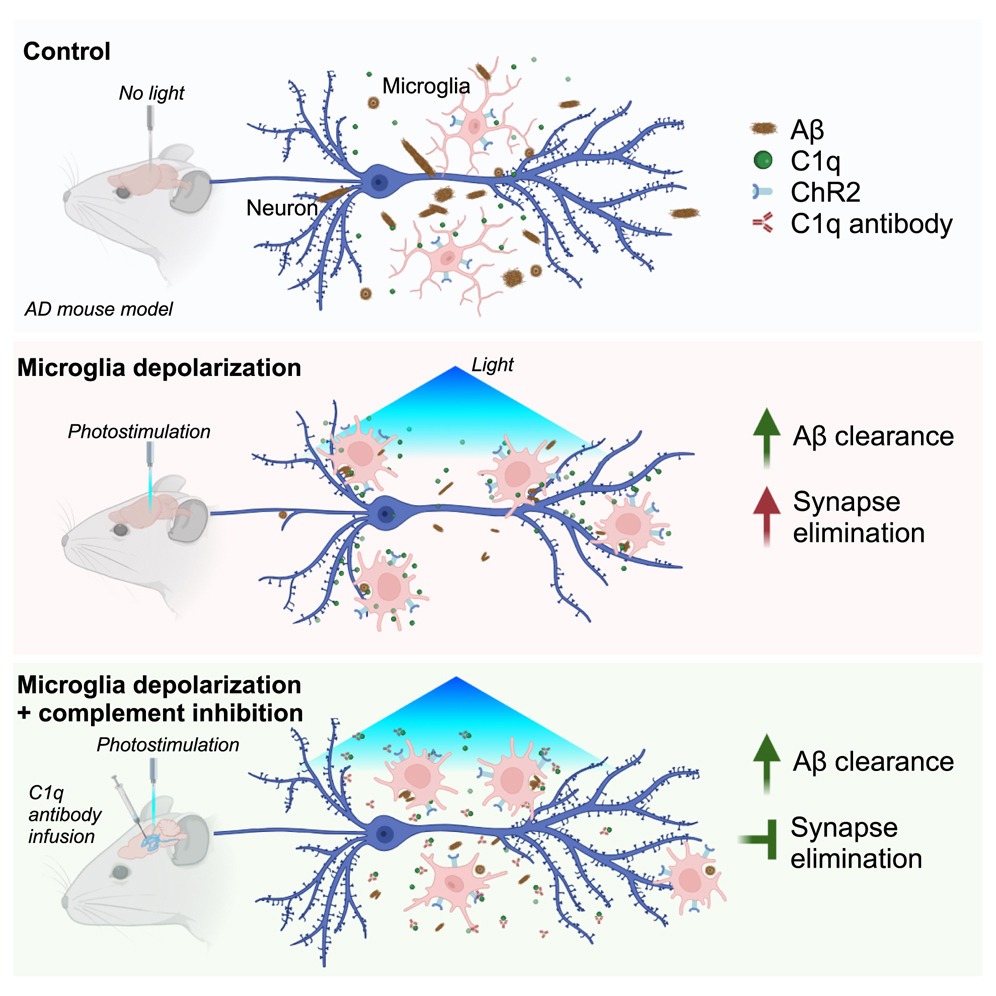New Neuromodulation Strategy Clears Alzheimer's Pathological Proteins, Reveals Potential Treatment Avenue
Date:28-02-2024 | 【Print】 【close】
Recently, Professor ZHAN Yang 's team at the Shenzhen Institute of Advanced Technology (SIAT) of the Chinese Academy of Sciences unveiled a novel neuromodulation strategy targeting microglia. Their approach effectively clears amyloid beta, a pathological protein associated with Alzheimer's disease.
The findings were published in Neuron on January 31.
Using optogenetic techniques, the research team activated microglia and observed a remarkable clearance of β-amyloid (Aβ) toxic proteins in the brain parenchyma. Despite the challenges in stably manipulating microglia, Prof. ZHAN explained that optogenetic activation of these immune cells effectively promotes Aβ clearance. However, this method also led to synapse loss and damage to other neurons.
To mitigate this "double-edged sword" effect, the team combined optogenetic microglial activation with the inhibition of the complement pathway molecule C1q in an Alzheimer's disease mouse model. This not only cleared Aβ toxic proteins without causing synapse loss but also provided insights into regulating microglia effectively.
The study's findings highlight the potential of stimulating microglia to enhance their phagocytic function, accelerating Aβ clearance in Alzheimer's disease. Prof. ZHAN emphasized that this research opens avenues for new neuroprotective strategies, aiding in understanding Alzheimer's pathological mechanisms and developing treatment approaches.
Looking ahead, Prof. ZHAN's team aims to delve deeper into the mechanisms behind enhanced microglial phagocytosis through light stimulation. Additionally, they plan to explore various neuromodulation strategies for other neurodegenerative diseases.

Clearance of β-amyloid and synapses by the optogenetic depolarization of microglia is complement selective. (Image by SIAT)
Media Contact:
ZHANG Xiaomin
Email:xm.zhang@siat.ac.cn